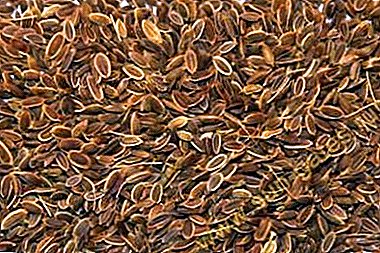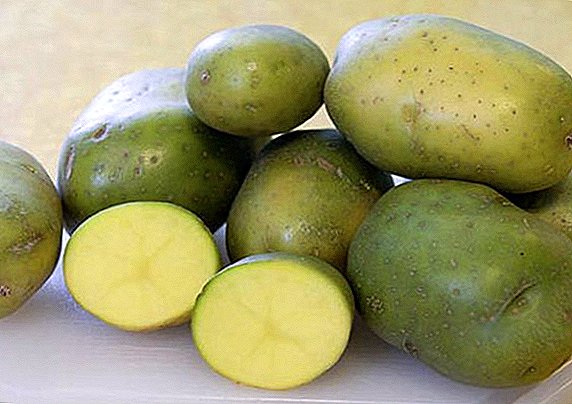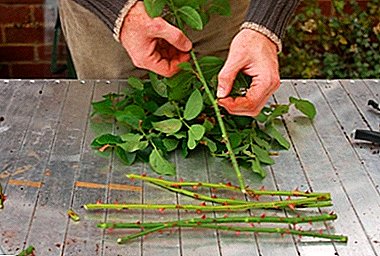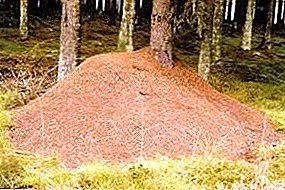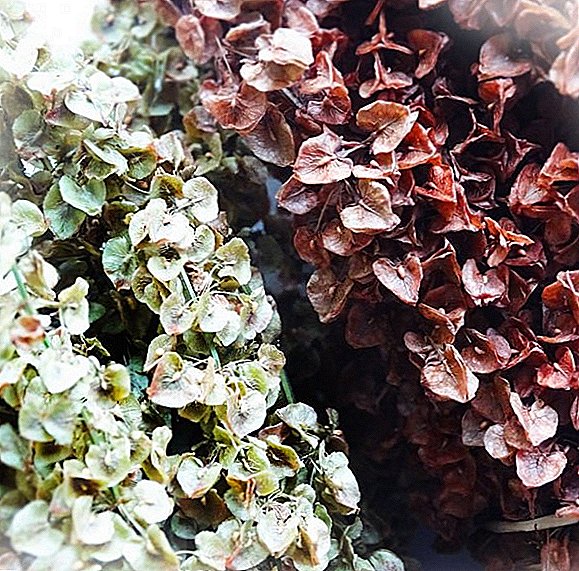 Folk remedies are striking in their diversity and ease of use. In every field, in every garden or forest, you can find something that will help in the fight against diseases and their prevention. Today we will talk about the beneficial properties of horse sorrel, as well as contraindications to the use of this plant.
Folk remedies are striking in their diversity and ease of use. In every field, in every garden or forest, you can find something that will help in the fight against diseases and their prevention. Today we will talk about the beneficial properties of horse sorrel, as well as contraindications to the use of this plant.
This is a fairly large plant with a height of 60-120 cm with a fleshy upright herbaceous stem. The lower leaves of the horse sorrel are large and razlohie, triangular in shape, the upper leaves are smaller. Small, gathered in a narrow inflorescence flowers appear at the height of summer (June - July), and the fruits ripen in late August - early September.
The fruit in the form of a nut, 4-5 mm in size, develops under the "shelter" of the perianth. Due to the rich chemical composition of horse sorrel is often used not only in traditional medicine, but also in high demand from professional doctors.
The chemical composition of horse sorrel
 Anthraquinone derivatives, which contain chrysophanic acid and chrysophanol, are present in the root of horse sorrel. It was also found about 15% of the pyrocatechol group, organic acids (oxalic, caffeic), vitamin K, essential oil, iron.
Anthraquinone derivatives, which contain chrysophanic acid and chrysophanol, are present in the root of horse sorrel. It was also found about 15% of the pyrocatechol group, organic acids (oxalic, caffeic), vitamin K, essential oil, iron.
The leaves contain a large amount of acids, the most beneficial for humans is ascorbic. Also in the leaves there is carotene. Calcium oxalate can be found in almost all parts of the plant.
Did you know? In its chemical composition, horse sorrel resembles rhubarb, but the content of antraglycosides in it is less.
Application of horse sorrel in scientific medicine
In official medicine, horse sorrel as a medicine is used in the form of powder and tincture. In professional medicine, commonly used preparations of horse sorrel, prepared on the basis of the roots, because they contain the greatest number of nutrients.
For the treatment of colitis used suspensions with the addition of essential oils of horse sorrel. Widely used for the treatment of bleeding stomach ulcers, enterocolitis. Horse sorrel is also used for such a delicate problem as hemorrhoids.
Due to its bacterial action, the essential oil of sorrel is included in the composition of ointments for healing wounds and ulcers. Used frequently as a laxative.
The use of horse sorrel in traditional medicine
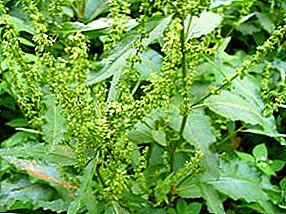 About the benefits of using horse sorrow learned already a long time ago. Our grandmothers have long used root and leafy shoots as laxatives, skillfully calculating the dose: in smaller quantities, the agent rather "knits" substances in the intestines, and if you take a large dose, it acts as a laxative.
About the benefits of using horse sorrow learned already a long time ago. Our grandmothers have long used root and leafy shoots as laxatives, skillfully calculating the dose: in smaller quantities, the agent rather "knits" substances in the intestines, and if you take a large dose, it acts as a laxative.
This kind of laxative is well tolerated by children, however for the preparation of children's funds need to use horse sorrel seeds. Often in folk medicine, sorrel infusions are used in the treatment of colds and for rinsing the mouth.
For a long time our ancestors have noticed that the use of infusion from the root of horse sorrel lowers blood pressure and on the basis of this, studies began at Tomsk University that confirmed this effect of horse sorrel.
Hemostatic and blood forming properties of horse sorrel found its application in the treatment of various skin diseases: infusions from the plant are used for various lotions for purulent wounds.
Good to use horse sorrel with coldsbecause it has a very strong expectorant effect.
To disinfect the oral cavity use horse sorrel powder, which is rubbed into the gums or rinse your mouth with decoction of the root or extract of horse sorrel leaves.
Patients with eczema, psoriasis or other skin diseases. use this wonderful plant to wipe the skin, lotions.
Children are often bathed in trays with the addition of horse sorrel leaves, because they have an antibacterial effect.
Important! When using any of the means of traditional medicine, including horse sorrel, you must consult with your doctor!
Collection and preparation of raw materials from horse sorrel
 Now that we know what horse sorrel is good for, it's time to figure out how to procure raw materials. Absolutely all parts of the plant are suitable for medical procedures, from roots to fruits.
Now that we know what horse sorrel is good for, it's time to figure out how to procure raw materials. Absolutely all parts of the plant are suitable for medical procedures, from roots to fruits.
Raw materials are harvested after the upper part of the plant is ready to "retire", that is, in early autumn. In order for your mini-production to be “waste-free”, before harvesting the roots and leaves, you must collect seeds and fruits.
It is better to dry them a little outdoors (2-3 days) or 10 minutes in the oven at a low temperature and store in a separate, well-protected from domestic insects place. After the fruits and seeds are collected, you can proceed to harvesting the roots.
This process is the most important and one of the most difficult. You need to carefully dig up the plant, shake off the ground from the rhizome, and immediately cut off the damaged or diseased roots.
Thick roots are cut lengthwise and put to dry with the cut part up, and thin and long roots are cut across and put in the dryer or dried in a place with good ventilation.
Did you know? It is possible to check the root's “readiness” very simply: if the root bends easily, but does not break, it is ready.It is possible to store the prepared raw materials no more than 3 years. The root is better to use already mature, well-developed plants. However, from one place the root can be excavated 1 time in 3-5 years.
Horse Sorrel Recipes
 Cooking "potions" from horse sorrel is very simple, and most importantly, everything you need can be found at home. Consider the most simple and versatile recipes for the preparation of remedies from sorrel.
Cooking "potions" from horse sorrel is very simple, and most importantly, everything you need can be found at home. Consider the most simple and versatile recipes for the preparation of remedies from sorrel.
Recipe number 1
Very popular is the horse sorrel ointment, which is prepared from plant root powder and animal fat. These two components should be mixed in equal parts and apply ointment on the damaged skin.
Important!Before applying the ointment, you need to test: first smear a healthy area of skin and wait 1 hour. If no trace of allergies is found, the remedy can be used.
Recipe number 2
Infusions and decoctions can be prepared from both the root and the leaves. For example, 300 g of dried and sliced lemon need to be poured with 3 liters of water and cook over low heat, stirring constantly.
It is necessary to cook for 20 minutes, then remove from heat, strain. It is possible to use such broth with sugar, using as tea leaves for tea. Such a decoction will be effective in hypertension, gastric disorders.
Recipe number 3
 Very popular "alcoholic horse sorrel." This tincture is often used for arthritis. Two solid roots of the plant should be folded into a two-liter jar and pour a liter of vodka (it is better to use moonshine).
Very popular "alcoholic horse sorrel." This tincture is often used for arthritis. Two solid roots of the plant should be folded into a two-liter jar and pour a liter of vodka (it is better to use moonshine).
Infuse the solution should within three weeks. With this liquid, rub the sore spots, after rubbing the place must be well "warmed". With particularly severe pain, you can apply a compress on the sore spot.
Recipe number 4
Infusions and decoctions of the leaves are used for douching in the treatment of "women's problems", as well as for gargling with sore throats and rinsing the mouth.
This infusion is prepared according to the principle of tea brewing: the leaves are poured with boiling water and insisted for 3-4 hours to the state of strong tea brewing. Apply this solution should be slightly warm, it is advisable to use it immediately and not to store in the refrigerator.
Recipe number 5
 Popular is the use of seeds for the treatment of diseases of the gastrointestinal tract. A teaspoon of seeds (only collected from the plant, but not purchased!) Chew thoroughly with a glass of boiled water.
Popular is the use of seeds for the treatment of diseases of the gastrointestinal tract. A teaspoon of seeds (only collected from the plant, but not purchased!) Chew thoroughly with a glass of boiled water.
For children, you can make a decoction of the seeds: boil a pinch of seeds in a glass of water, cool and give a drink. This method is more gentle for the child's body.
Contraindications and side effects
Use of horse sorrel can not be pregnant women, and people with impaired renal function.
Failure to comply with the dosage in the use of horse sorrel for children can lead to poisoning, accompanied by vomiting, diarrhea.
Did you know? Frequent use of horse sorrel can be addictive, and after a while the body will no longer respond to the remedy.Recently, scientists have been interested in how sorrel affects human pressure, and it was found that people who are prone to hypotension should use sorrel, very carefully, as prescribed by a physician, precisely following the dosage.
 As you can see, this simple plant knowingly enjoys such popularity. Horse sorrel can heal or play a "supporting" role in the treatment of the disease. Unremarkable in appearance, in its chemical composition, it is one of the richest medicinal properties of plants, the use of which will greatly benefit your body.
As you can see, this simple plant knowingly enjoys such popularity. Horse sorrel can heal or play a "supporting" role in the treatment of the disease. Unremarkable in appearance, in its chemical composition, it is one of the richest medicinal properties of plants, the use of which will greatly benefit your body.


